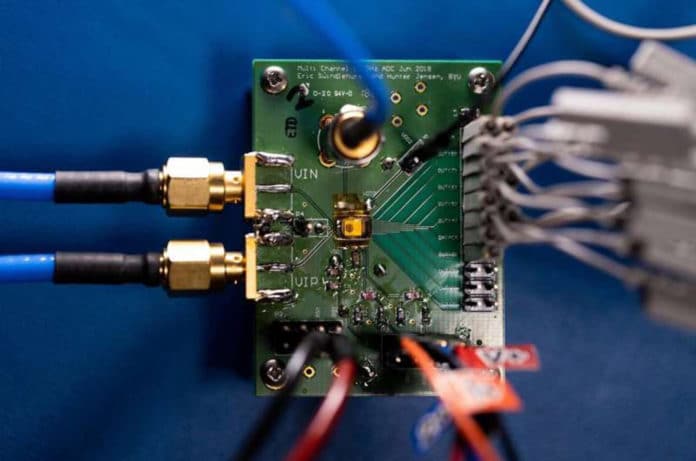Every year, tech giants develop faster, more powerful devices with longer-lasting batteries to meet the increasing demand for lightning-quick mobile technology.
Following the path, scientists at Brigham Young University have just created the world’s most power-efficient high-speed analog-to-digital converter (ADC) microchip. Analog to Digital Converters (ADC) translate analog electrical signals for data processing purposes.
Unlike current ADCs, which consume hundreds of milli-Watts, this new microchip consumes only 21 milli-Watts of power at 10GHz for ultra-wideband wireless communications.
Increasingly higher bandwidths within communications system devices are the main challenge that scientists often face. Scientists, in this study, solved this problem by focusing on a key part of the ADC circuit called the DAC, which is a central piece that stands for the exact reverse of ADC: digital-to-analog converter.
They made the converter faster and more efficient by reducing the loading from the DAC by scaling both the capacitor parallel plate area and spacing. They also grouped unit capacitors differently from the conventional way, grouping together unit capacitors that are part of the same bit in the DAC rather than having them be interleaved throughout. Doing so lowered the bottom-plate parasitic capacitance by three times, significantly lowering power consumption while increasing speed.
Finally, using a bootstrap switch increases the speed but doesn’t require additional hardware because it involves splitting existing devices and making route changes in the circuit.
BYU professor Wood Chiang said, “We’ve proven the technology of the chip here at BYU, and there is no question about the efficacy of this particular technique. This work pushes the envelope of what’s possible and will result in many conveniences for consumers. Your Wi-Fi will continue to get better because of this technology, you’ll have faster upload and download speeds, and you can watch 4K or even 8K with little to no lag while maintaining battery life.”
“Other likely applications for the ADC include autonomous vehicles (which use a ton of wireless bandwidth), smart wearables like glasses or smart contact lenses, and even things such as implantable devices.”
Journal Reference:
- Eric Swindlehurst et al., An 8-bit 10-GHz 21-mW Time-Interleaved SAR ADC With Grouped DAC Capacitors and Dual-Path Bootstrapped Switch, IEEE Journal of Solid-State Circuits (2021). DOI: 10.1109/JSSC.2021.3057372
